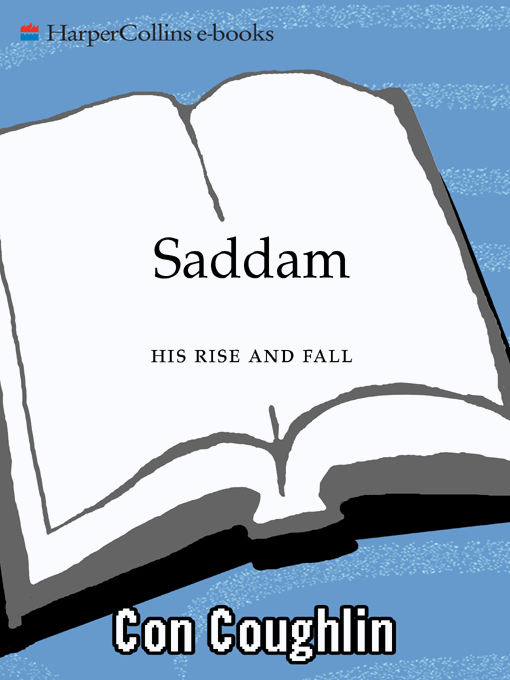Saddam : His Rise and Fall
Read Saddam : His Rise and Fall Online
Authors: Con Coughlin




HIS RISE AND FALL

In memory of Juan-Carlos Gumucio (1950â2002)
“Emerge tu recuerdo de la noche en que estoy.”
âPABLO NERUDA
When this book was first published in the autumn of 2002, I remarked that writing a biography of Saddam Hussein was rather like trying to assemble the prosecution case against a notorious criminal gangster. Most of the key witnesses had either been murdered, or were too afraid to talk. Since I made that comment, a highly successful military campaign has been fought to overthrow Saddam's regime in Iraq. Despite the coalition's success in defeating Saddam, however, it has not become any easier to chronicle the life of a man who became one of the world's most notorious dictators.
A great deal of information was lost during the wave of looting of key government buildings that broke out immediately after the coalition's liberation of Baghdad in April 2003. And Saddam's overthrow did not give his former close colleagues and associates the confidence to talk openly about his tyranny. The success of the Baathist insurgency (which Saddam himself helped to organize before the war) that was launched soon after Operation Iraqi Freedom, together with the widespread state of lawlessness that pervaded Iraq after the military campaign was concluded, meant that the same reticence that afflicted many Iraqis with inside knowledge of Saddam's regime before the war continued to affect them well after the fighting had stopped. Even when the old tyrant was safely locked up in American custody, his former associates continued to live in fear that either they or their families might be subjected to revenge attacks if they spoke out of turn.
For this revised edition, which includes new material on how Saddam conducted himself during the buildup to hostilities, the war itself, and his
subsequent life on the run up until his capture in December 2003, I have continued to draw on the testimony of former colleagues, Baath Party officials, and other associates of Saddamâthe lucky few who managed to escape before Saddam had a chance to liquidate them. Many of them have agreedâin certain cases with some reluctanceâto talk openly about their experiences for the first time. Only those who were prepared to be named have been identified; in many cases, however, this has not been possible. Similarly, many of the government, diplomatic, and intelligence officialsâboth serving and retiredâin the United States, Europe, and the Middle East who have assisted with this undertaking have asked that their names be withheld. To everyone who enabled this project to reach fruition I offer my sincerest thanks. Naturally, I take full responsibility for the interpretations and conclusions I have reached in the course of writing this book.
I would like to express my gratitude to Linda Bedford and the librarians at the Royal Institute for International Affairs in London for their expert and efficient assistance in locating important source material, to the staff of the
Telegraph
library for their help in finding obscure press articles, and to Jules Amis for her unfailingly good-natured assistance.
In the interest of readability, no attempt has been made to give a scholarly transliteration of Arabic names for people or places, and the style adopted is the one generally used in British and American newspapers.







